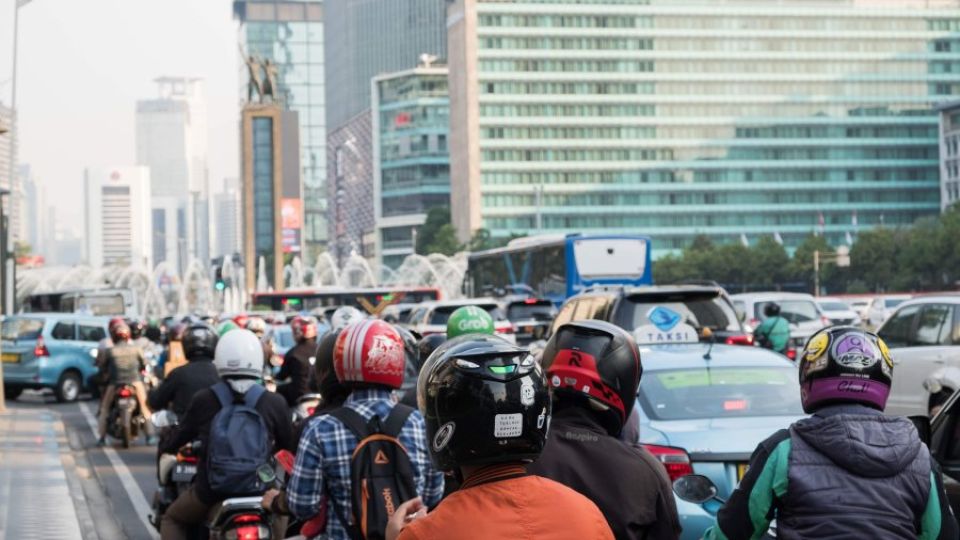December 20, 2023
JAKARTA – Newly released data from Statistics Indonesia (BPS) reveal a deep discrepancy between the haves and the have-nots in Jakarta, given that the townspeople’s spending average sits far above national per-capita expenditure.
The BPS living cost survey 2022, published Dec. 12, unveiled that Jakarta households spent an average Rp 14.89 million (US$959) per month in 2022, far above the national average figure of Rp 8.36 million.
Interim BPS head Amalia Adininggar emphasized that, as a mathematical average, the Rp 14.89 million figure was pushed up by “the very rich” shelling out money for excessive consumption.
As the same figure also accounts for a large number of penny-pinching poor, it is not reflective of the typical lifestyle in the capital.
Amalia, who is also the undersecretary for economy at the National Development Planning Agency (Bappenas), implored the press not to look at this survey results as a problem, given that the data were intended for mapping out inflation components.
However, the figure seems oddly out of sync with other BPS data showing that the city’s average monthly per-capita expenditure amounts to Rp 1.57 million, which would point to spending of just over Rp 6 million a month by a family of four, for example.
Institute for Development of Economics and Finance (Indef) executive director Tauhid Ahmad said it was possible that the two findings were reached using different methodologies. He noted, however, that the difference might also indicate disparity.
Speaking to The Jakarta Post on Thursday, he pointed out that expenditure of middle- and lower-class families, which accounted for the majority of households in Jakarta, was nowhere near the figure states in the “living cost” survey.
“When there are more people in the bottom part of the population, but the average remains high, that means there are more rich people [spending more],” Tauhid said.
The Jakarta satellite cities of Bogor, Depok, Tangerang and Bekasi also featured in the top 10 among the cities assessed by BPS for the living costs survey, as did the trade hubs Surabaya, Makassar and Kendari and industrial focal points Batam and Balikpapan.
Tauhid attributed this to the high number of rich people residing in those cities.
Statistical outliers can pull up an average far above the median, producing figures that seem surprising at first glance.
When asked about rising inequality, Amelia told reporters on Wednesday that the survey was not designed to reflect disparity but “purely meant to observe shifting consumption patterns”.
The statistical gauge for inequality, she explained, was the Gini coefficient.
BPS revealed in July that the urban Gini coefficient in Indonesia had inched up to 0.409 in March from 0.402 in September last year, meaning cities across the country had become more unequal in economic terms, a trend that has persisted since at least 2019.
Read also: RI inequality increases slightly as poverty declines
Similarly, BCA chief economist David Sumual told the Post on Wednesday that the survey did not capture inequality per se, as that was better reflected in the Gini coefficient.
However, he did point out that the new survey’s findings indicated spending discrepancy, as the rich bought “big ticket items” like cars or electronics, stretching the living cost statistics upward.
“The [monthly] spending for Indonesian people in general is probably around [Rp 1 million to Rp 2 million], it’s so small,” David highlighted.
The 2020 National Socioeconomic Survey (SUSENAS) shows that 58 percent of the spending among the poorest 10 percent of the population went on food, beverages and tobacco. The same spending category accounted for only 23 percent of expenditure for the wealthiest 10 percent.
The upper 10 percent spent the most on transportation, communication and financial services, attributing for 30 percent of their consumption.
Citing a dataset produced by BCA, David explained that the upper and upper-middle class accounted for 70 percent of spending in nominal terms.
To address the problem of unequal wealth distribution, David suggested the government take fiscal steps like a progressive tax for the rich and avoiding nontargeted subsidies.
He said he opposed government policy of giving subsidies in the form of goods, such as for fuel.
David argued that such aid would depart from the idea of a subsidy, as the rich could find ways to take advantage of it.
Speaking to the press after the launching of Indonesia Economic Prospects report on Wednesday, World Bank lead economist for Indonesia and Timor-Leste Habib Rab said the government could take short-term and long-term measures to tackle disparity.
The former would materialize as a social protection system to provide the economically insecure a buffer against shocks so as to “maintain a minimum standard of living”.
He noted that this would have to be accompanied by updating the social registry, so that the financial support could be channeled to those who needed it most, given that people constantly moved across the income threshold.
Read also: Millions in RI at risk of falling back into poverty, World Bank warns
Out of 847 commodities, people spent the most on electricity, gasoline and rice, the BPS living cost survey 2022 also shows.


